List of presidents of the United States by military rank
The United States Constitution names the president of the United States the commander-in-chief of the United States Armed Forces. Many presidents, however, also served in the military before taking office; all but 13 of the 45[lower-alpha 1] persons to become president have served.
Of the 32 presidents with military service, 31 have been commissioned officers, of whom five began their careers as regular officers (Jimmy Carter transferred to the Naval Reserve after five years in the Navy). There have been 13 presidents who held general officer rank (four regular officers, six militia officers, three volunteers).
Table of United States presidents by military rank
General of the Armies
| Rank order | Highest rank | Branch | President | Combat experience | Service notes |
|---|---|---|---|---|---|
| 1 | Virginia militia |
 [1][2] |
(1754-1758) Revolutionary War (1775-1783) Whiskey Rebellion (1791-1794) |
Served in the Virginia militia (1752–1758), attaining the rank of colonel; served as commander in chief of the Continental Army (1775–1783) during the Revolutionary War, with the rank of "General and Commander in Chief." Washington was a lieutenant general in the United States Army at his death. In 1976, as part of the Bicentennial, then-president Gerald R. Ford posthumously appointed Washington as General of the Armies of the United States and specified that he would forever rank above all officers of the Army, past, present and future. The rank of General of the Armies is considered senior to General of the Army, and has been bestowed on only two officers in history, John J. Pershing, in 1919 for his services in World War I, and George Washington for his service as the first Commanding General of the United States Army. (An equivalent rank, Admiral of the Navy, was given to George Dewey.) |
General of the Army
| Rank order | Highest rank | Branch | President | Combat experience | Service notes |
|---|---|---|---|---|---|
| 2 |  General of the Army |
 (Regular army) |
 |
General (O-10)
| Rank order | Highest rank | Branch | President | Combat experience | Service notes |
|---|---|---|---|---|---|
| 3 | General of the Army |
 (Regular Army) |
 |
Graduated West Point; first Lieutenant General since Washington, appointed as four-star General of the Army in 1866. |
Major General (O-8)
| Rank order | Highest rank | Branch | President | Combat experience | Service notes |
|---|---|---|---|---|---|
| 4 | Major General |
 North Carolina Militia Tennessee Militia |
 |
Served at age 13 as a militia messenger during the Revolutionary War; was captured, becoming the only President to have been held as a prisoner of war (Washington had surrendered in the French and Indian War but was immediately paroled); served in the War of 1812, attaining the rank of major general and became a national hero after his success at the Battle of New Orleans. | |
 |
 |
||||
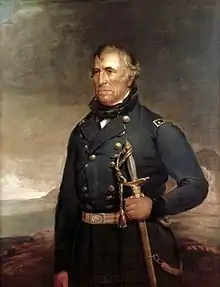 |
|||||
Brevet Major General of Volunteers |
 (volunteers) |
 |
|||
Major General of Volunteers |
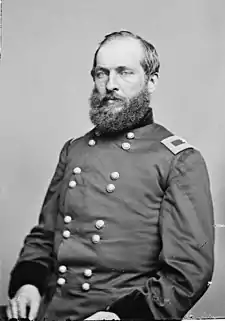 |
||||
Major General |
 |
He was Secretary of War under President Theodore Roosevelt from 1904 to 1908. Taft also joined a Connecticut Home Guard unit during World War I. He was commissioned with Military rank in the American Red Cross By President Wilson August 1917[3] | |||
Brigadier general (O-7)
| Rank order | Highest rank | Branch | President | Combat experience | Service notes |
|---|---|---|---|---|---|
| 5 | Brigadier General |
 New Hampshire Militia |
 |
||
New York State Militia |
 |
– Civil War |
|||
 |
 |
– Civil War |
|||
 Indiana State Militia |
 |
||||
Colonel (O-6)
| Rank order | Highest rank | Branch | President | Combat experience | Service notes |
|---|---|---|---|---|---|
Colonel |
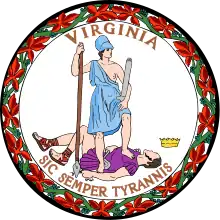 Albemarle County |
 |
|||
Orange County |
 |
||||
Virginia State Militia |
.jpg.webp) |
||||
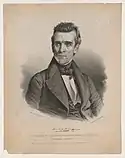 border[ |
|||||
 |
 |
– Medal of Honor (posthumously; 2001) |
|||
 |
|||||
Commander (O-5)
| Rank order | Highest rank | Branch | President | Combat experience | Service notes |
|---|---|---|---|---|---|
| 7 |  |
 (Reserve) |
 |
– Silver Star |
|
 |
|||||
Major / Lieutenant commander (O-4)
| Rank order | Highest rank | Branch | President | Combat experience | Service notes |
|---|---|---|---|---|---|
| 8 | 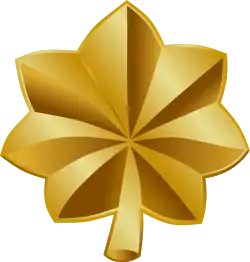 Major |
New York State Militia |
 |
||
 Brevet Major |
 (volunteers) |
 |
|||
 Lieutenant Commander |
 (Reserve) |
 |
Captain/Lieutenant (naval) (O-3)
| Rank order | Highest rank | Branch | President | Combat experience | Service notes |
|---|---|---|---|---|---|
| 9 |  Captain |
 |
.jpg.webp) |
||
 |
 |
||||
 (Reserve) |
 |
||||
 Lieutenant |
 (Reserve) |
 |
– |
||
.jpg.webp) |
First lieutenant / Lieutenant, junior grade (O-2)
| Rank order | Highest rank | Branch | President | Combat experience | Service notes |
|---|---|---|---|---|---|
| 10 | |||||
Lieutenant, Junior Grade |
 (Reserve) |
 |
|||
First lieutenant |
 (Air National Guard) |
 |
Private
| Rank order | Highest rank | Branch | President | Combat experience | Service notes |
|---|---|---|---|---|---|
| 11 |  Pennsylvania National Guard |
 |
Did not serve
| President | Service notes |
|---|---|
| John Adams | |
| John Quincy Adams | |
| Martin Van Buren | |
| Grover Cleveland | Drafted during the Civil War, but paid $150 for a substitute (a legal option under the terms of the Enrollment Act of 1863, and his substitute survived the war). |
| Woodrow Wilson | |
| Warren G. Harding | |
| Calvin Coolidge | |
| Herbert Hoover | Served in a private humanitarian capacity as a civilian in Europe during World War I. He was also involved in the Siege of Tientsin during the Boxer Rebellion as a guide for U.S. Marines. |
| Franklin D. Roosevelt | Attempted to join the Navy during the Spanish–American War but was unable as he contracted measles. Served as Assistant Secretary of the Navy from 1913 and through World War I; when the U.S. entered the war in 1917 he offered his resignation so that he could apply for a commission in the Navy, but was refused by the President. |
| Bill Clinton | Received a 2-A student draft deferment during the Vietnam War, and later registered for the draft. He received a high draft number, was not drafted and did not serve. Served as President during the peacekeeping war in Bosnia. |
| Barack Obama | |
| Donald Trump | Received four draft deferments while attending college, then one for medical reasons after he was diagnosed with bone spurs on his heels.[17] |
| Joe Biden | While in school, received 5 student draft deferments and afterward was classified as unavailable for military service due to asthma. |
See also
- List of United States military leaders by rank
Notes
- As of 2021. While there have been 46 presidencies, only 45 individuals have served as president: Grover Cleveland served two non-consecutive terms and is numbered as both the 22nd and 24th U.S. president.
References
- wikisource:Public Law 94-479
- wikisource:Order 31-3 Department of the Army Order Number 31-3 of 13 March 1978
- The Washington times., August 07, 1917, NIGHT FINAL, Page 3, Image 3
- "Military Personnel File of Harry S. Truman". Harry S. Truman Presidential Library and Museum. Retrieved January 1, 2009.
- "American Warriors Home Page". americanwarriorsfivepresidents.com. Retrieved October 25, 2015.
- Commander Lyndon B. Johnson, USNR from the Naval Historical Center
- Caro, Robert (1982). The Years of Lyndon Johnson: The Path to Power. Alfred A. Knopf. ISBN 0-394-49973-5.
The most you can say about Lyndon Johnson and his Silver Star is that it is surely one of the most undeserved Silver Stars in history, because if you accept everything that he said, he was still in action for no more than 13 minutes and only as an observer. Men who flew many missions, brave men, never got a Silver Star.
- Tillman, Barrett and Sakaida, Henry. "LBJ's Silver Star: The Mission That Never Was". b-26marauderarchive.org. Retrieved March 22, 2009.
The fact is LBJ never got within sight of Japanese forces.
CS1 maint: multiple names: authors list (link) - Commander Richard M. Nixon, USNR from the Naval Historical Center
- "CNN.com Specials". cnn.com. Retrieved October 25, 2015.
- Lieutenant Commander Gerald R. Ford, USNR from the Naval Historical Center
- Lieutenant John F. Kennedy, USN from the Naval Historical Center
- Ryder, Robert Randall "My War Chuck Downey Youngest Naval Aviator in WWII." Sea Classics, August 2013. "Off he went for training in Memphis, Tenn., before heading to Pensacola, Fla., for flight school, where he was commissioned as an Ensign in the U.S. Navy on July 16, 1943. Downey was the tender age of 18 years, 11 months, and 14 days when he earned his wings."
- "Democratic Group's Ad Revives "AWOL" Allegation Against Bush". FactCheck.org. Retrieved May 24, 2010.
- Roane, Kit R. "Bush's military service in question – again (9/8/04)". USNews.com. Retrieved May 24, 2010.
- Eder, Steve; Philipps, Dave (August 1, 2016). "Donald Trump's Draft Deferments: Four for College, One for Bad Feet". The New York Times. New York, NY. p. A1.
External links
This article is issued from Wikipedia. The text is licensed under Creative Commons - Attribution - Sharealike. Additional terms may apply for the media files.